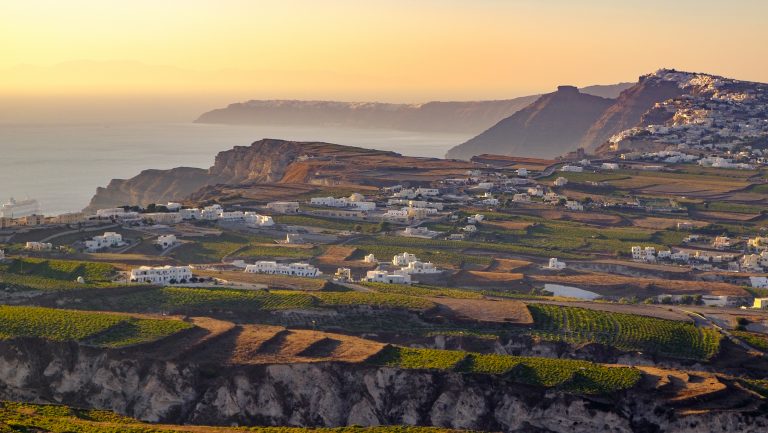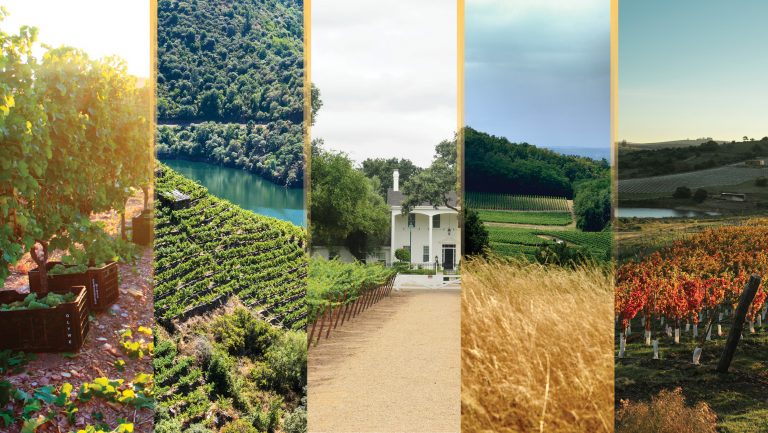Unique vineyard landscapes, volcanic soils, and centuries—at times millenia—of viticultural heritage have provided small, paradisiacal wine-producing islands with the devotion of a niche of wine professionals and enthusiasts.
Leading producer Madeira Wine Company has been raising its wines’ prices yearly by up to five percent in response to collectors’ growing demand for rare and “indestructible,” as winemaker Francisco Albuquerque puts it, old vintages. Meanwhile, Assyrtiko’s growing popularity has turned Santorini’s grapes into some of the most prized ones in all of Europe. According to Sofia Perpera, the director of the Greek Wine Bureau in North America, Assyrtiko grapes would fetch about €0.80 in 2010. They now demand up to €5 per kilo, compared to less than €0.50 for other varieties elsewhere in Greece.
Despite such an apparently positive picture, however, dramatic challenges lie beneath the surface. The impact of mass tourism and generational shifts on their fragile societies is posing serious threats to the future existence of viticulture on these islands.

Don’t miss the latest drinks industry news and insights. Sign up for our award-winning newsletters and get insider intel, resources, and trends delivered to your inbox every week.
A New Reality
Last year, Portugal’s autonomous archipelago of Madeira experienced around 10 million overnight stays, twice as much as a decade ago. The booming tourism sector is benefiting the region’s economy with a significant source of employment, yet skyrocketing demand for holiday accommodations has been causing its vineyards to shrink. For Madeira’s over 2,000 growers, selling land off to real estate developers is the ideal means to get rid of tiny, unprofitable vineyard plots: from a total of 1,803 hectares in 1989, the archipelago is now left with a mere 681 hectares of vineyards. “Imagine a grower when they tell him his little plot of land is worth €300,000,” says Albuquerque. “What do you think he’s gonna do?”
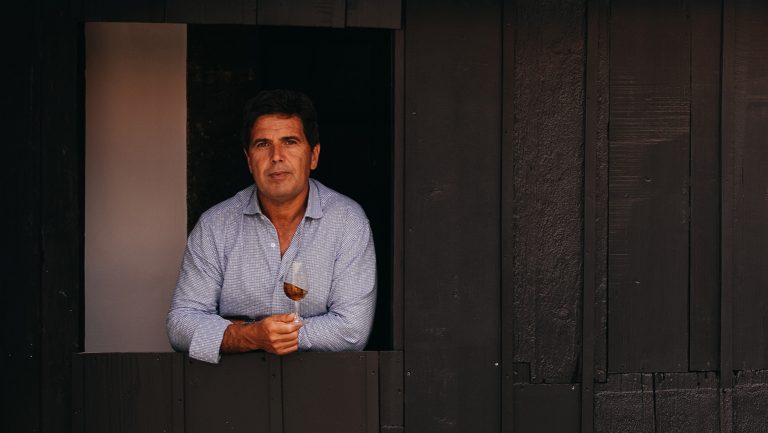
The Bual grape, used to make semi-sweet, premium Madeiras, is mostly planted in Calheta, a prime spot for Madeira’s tourism industry. “There are only 16 hectares managed by 23 vinegrowers there and most of the vineyards are on sale. The risk is that Bual vineyards will disappear,” warns Albuquerque.
To prevent Madeira’s vineyards from disappearing for good, Albuquerque has been negotiating with the local government the development of protected vinegrowing reserves, where the law would allow no use of the land other than viticulture. “These will be sort of experimental viticultural reserves,” he explains. “If we don’t do that, Madeira will have to reduce the volume of wine it produces by a lot.”
The advent of mass tourism is causing comparable challenges in Santorini. In the 1960s, the island had some 2,500 hectares of vineyards. Today the figure has dropped to 1,300 hectares.
“Last August, I saw a lovely, 0.5 hectare-vineyard with 91-year-old vines being sold for €4 million. Vines are being uprooted to make room for hotels,” says Nektarios Bileris, the brand ambassador of co-op winery, Santo Wines.
To meet the market’s growing demand for Assyrtiko, wineries are looking for cheaper land in neighboring Theresia island, still part of the Santorini caldera, and—fittingly—legally allowed for Santorini PDO wine production. “With new plantings in Therasia, Santorini’s total acreage will hopefully stay the same as it is today,” says Bileris. “We’re going to see more and more wines coming from Therasia.” There are now about 50 hectares of vineyards in Therasia and the island’s first winery, Mikra Thira, launched just before the pandemic. Its wines largely resemble those of Santorini proper in style, but a distinctive Therasia character is expected to take shape as more expressions see the light in the coming years.
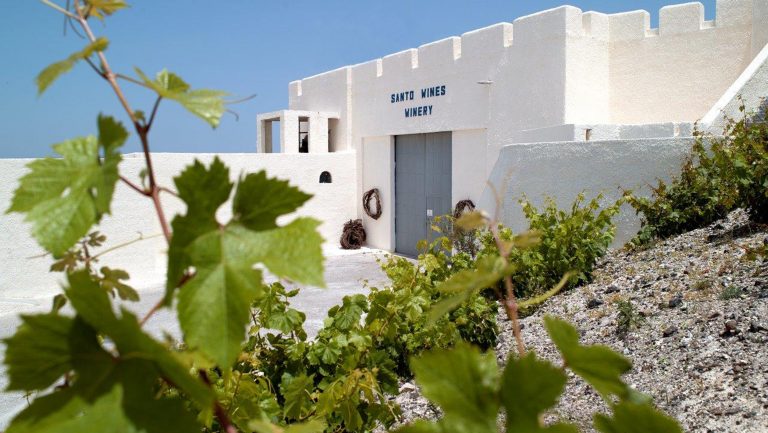
While pleased by the developments on Therasia, Bileris believes these islands’ viticultural future may only be secured by deterring growers from giving their land away. Santo Wines has been offering a comprehensive support program involving a team of agronomists who takes care of the vineyard on the grower’s behalf, from pruning to harvesting. The grower gets paid full price for the grapes, all without lifting a finger.
Albuquerque adopted a similar approach, with a growing team of agronomists who work vineyards on the behalf of those who might be tempted to sell or families who lack younger generations to take over.
A Modern Society
Indeed, islander vinegrowing industries are suffering from wider societal shifts, too. “You can do something about old vines, but nothing can solve the lack of working hands,” says Leto Paraskevopoulou, the second-generation winemaker at Gaia Wines. “We’ve been working with first-generation Balkan immigrants for the past two decades but they are getting old. Their kids grew up as Greeks and, like everyone, don’t want to do that any more. They become doctors or simply leave the island.”
The winery is now recruiting younger migrant laborers through its headquarter winery on Greece’s mainland, and is considering to headhunt more international workers overseas. “But that’s a near-future thing. It would be easier to train the tourists who would pay us for the experience, but would you ever trust that?” she jokes.
On Italy’s Pantelleria, a small Sicilian island closer to Tunisia than to Sicily that is renowned for passito sweet wine, younger people are shifting away from agriculture. Many moved to the mainland; others migrated abroad. Natality is at a historic low of 7.2 births per 1000 people: in 2020, Pantelleria shut its last maternity ward. Four €2,000 grants were launched last year to lure young enology students on to the island, yet the efficacy of such incentives is yet to be tested. “In 1974 we harvested 33,000 tons of grapes; last year we had 2,000 tons,” says Benedetto Renda, the CEO of Pellegrino Wines and the president of Pantelleria’s wine consortium. While he admits that much of the drop was initially due to the collapse of the table grape industry, he argues that the disappearance of vineyards—from 5,000 hectares in the 1980s, to today’s 407 hectares—is a worrying development.
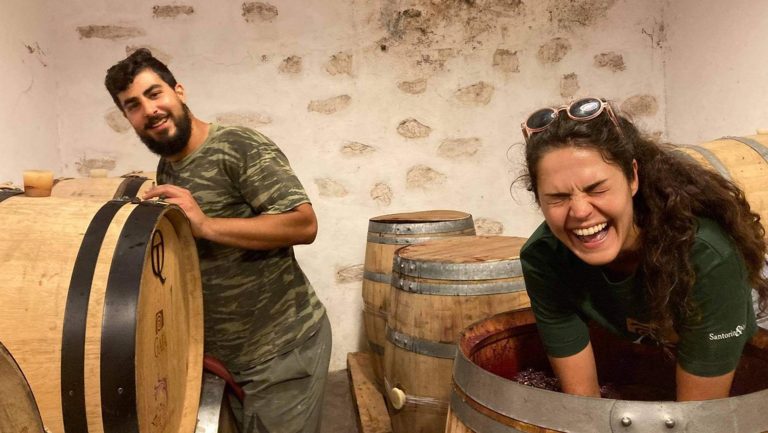
Not unlike Santorini and Madeira, those who decide to stay on the island find occupation in the thriving, and certainly less back-breaking, tourism industry. “Many prefer to offer boat trips to visitors, which is not as hard a job as viticulture,” says Baldo Palermo, the communications manager of Donnafugata, the brand behind one of Pantelleria’s best-known passitos, Ben Rye. “That keeps you busy for only six or seven months, then you’re free to do whatever you want for the rest of the year.” Much of Donnafugata’s entire Pantelleria base team of 20 is sourced from the Sicilian mainland by offering perks such as free meals, accommodation, and airfares for family visits. “And the family can join them during the summer so that they can spend a few months together over here,” says Palermo.
A Silver Lining
In such a stark scenario, these islands are responding to the challenges by harnessing the growth of tourism to their advantage. “Tourism activities are being increasingly integrated into the winemaking sector,” says Renda. “There are many wineries—including Pellegrino—that offer experiences such as wine tastings or vineyard walks. In fact, wine is one of the things that makes Pantelleria such an attractive destination for tourists.”
Santorini’s wineries are also capitalizing on the island’s 2 to 2.5 million visitors a year by developing enotourism activities. “After tourism seriously boomed in the 2000s, all wineries began building visitor centers, restaurants, and tasting rooms,” explains Perpera. She claims that Santo Wines alone welcomed some 500,000 visitors in 2019, with similar figures in 2022 after years of Covid restrictions.
With mass tourism booming and younger generations unlikely to rediscover their love for manual labor anytime soon, these fragile wine regions are at a historical turning point. Yet by embracing visitors and adapting to their changing societies, their vineyards might well manage to survive another few centuries.

Dispatch
Sign up for our award-winning newsletter
Don’t miss the latest drinks industry news and insights—delivered to your inbox every week.
Dr. Jacopo Mazzeo is a U.K.-based freelance drinks journalist, consultant, and photographer. He contributes to leading trade and consumer publications including Decanter, Wine Enthusiast, Whisky Magazine, and Good Beer Hunting. Jacopo consults on consumer trends and marketing strategies, is a former sommelier, and judges international wine, beer, and spirits competitions. Before he embraced full-time journalism, he studied musicology at the University of Bologna and took a PhD at the University of Southampton. Follow Jacopo on Instagram @jacopomazzeophoto

